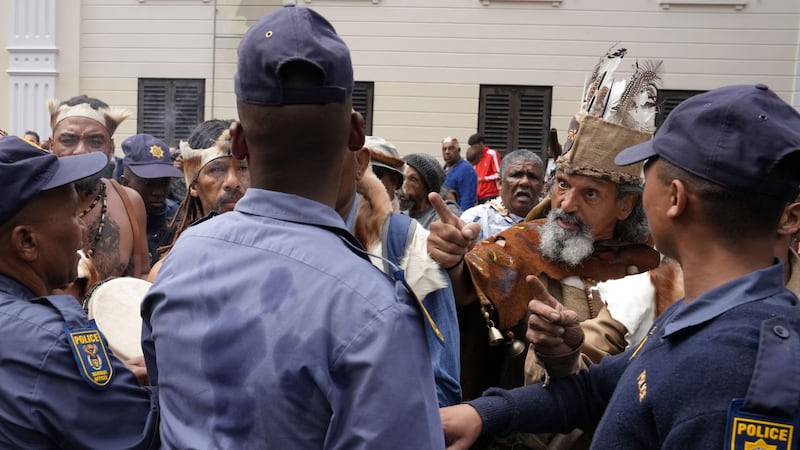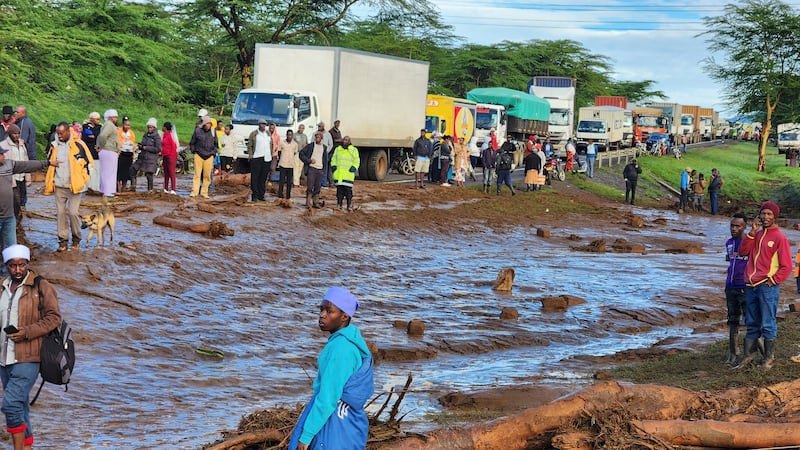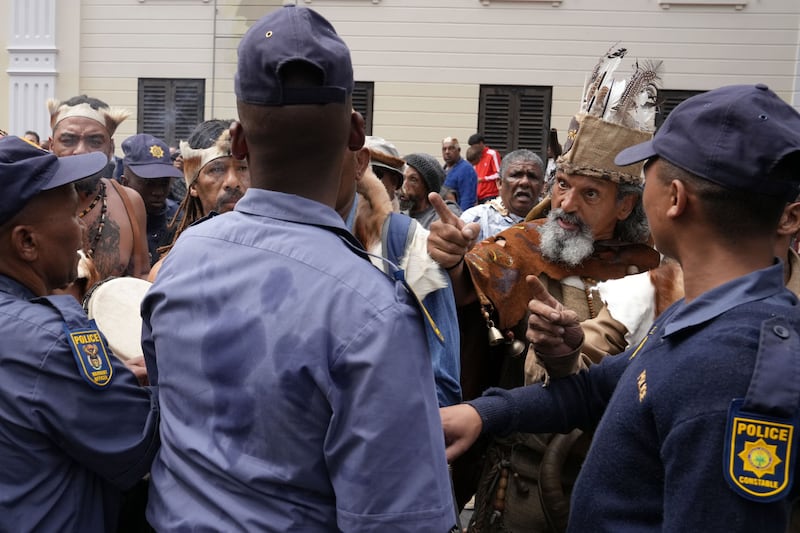Protesters in Cape Town have confronted the king and queen of the Netherlands as they visited a museum that traces part of their country’s 150-year involvement in slavery in South Africa.
King Willem-Alexander and Queen Maxima were leaving the Slave Lodge building in central Cape Town when a small group of demonstrators representing South Africa’s First Nations groups – the earliest inhabitants of the region around Cape Town – surrounded the royal couple and shouted slogans about Dutch colonisers stealing land from their ancestors.
The king and queen were put into a car by security personnel and quickly driven away as some of the protesters, who were wearing traditional animal-skin dress, jostled with police.
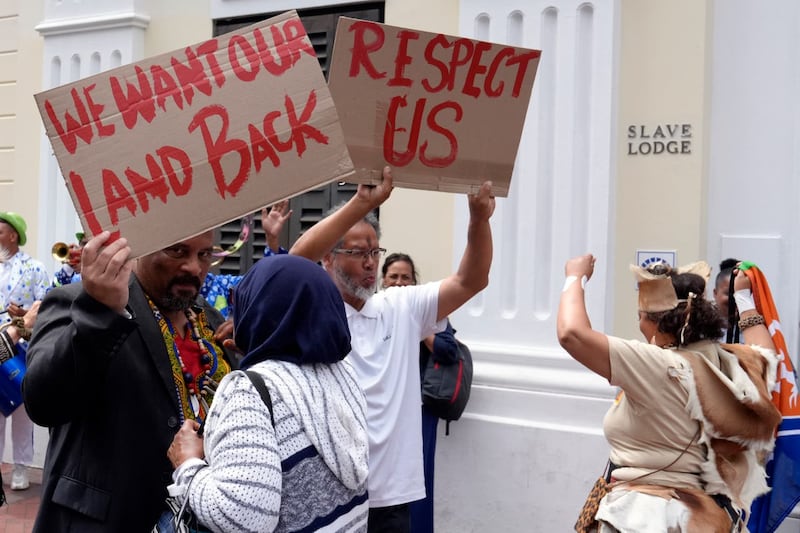
The Dutch colonised the south-western part of South Africa in 1652 through the Dutch East India trading company. They controlled the Dutch Cape Colony for more than 150 years before British occupation.
Modern-day South Africa still reflects that complicated Dutch history, most notably in the Afrikaans language, which is derived from Dutch and is widely spoken as an official language of the country, including by First Nations descendants.
King Willem-Alexander and Queen Maxima made no speeches during their visit to the Slave Lodge but spent time walking through rooms where slaves were kept under Dutch colonial rule.
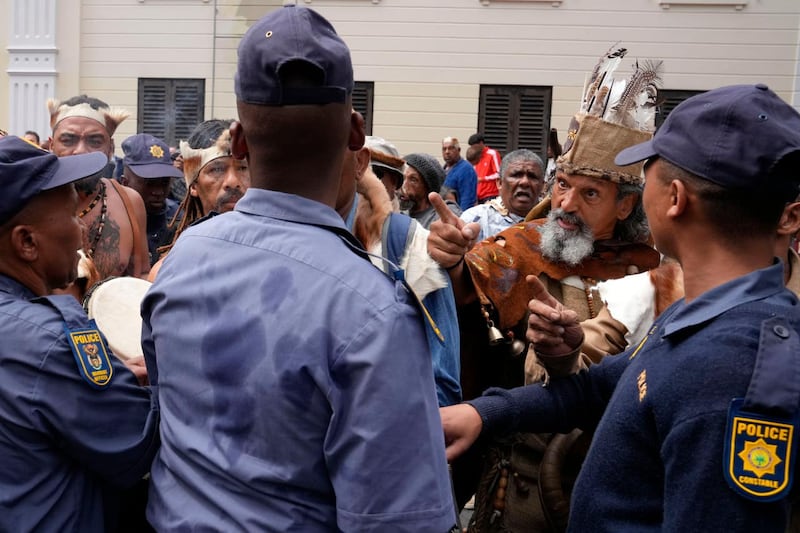
The Slave Lodge was built in 1679, making it one of the oldest buildings in Cape Town. It was used to keep slaves – men, women and children – until 1811. Slavery in South Africa was abolished by the English colonisers in 1834.
Garth Erasmus, a First Nations representative who accompanied the king and queen on their walk through the Slave Lodge, said their visit should serve to “exorcise some ghosts”.
The Dutch East India Company established Cape Town as a settlement for trading ships to pick up supplies on their way to and from Asia.
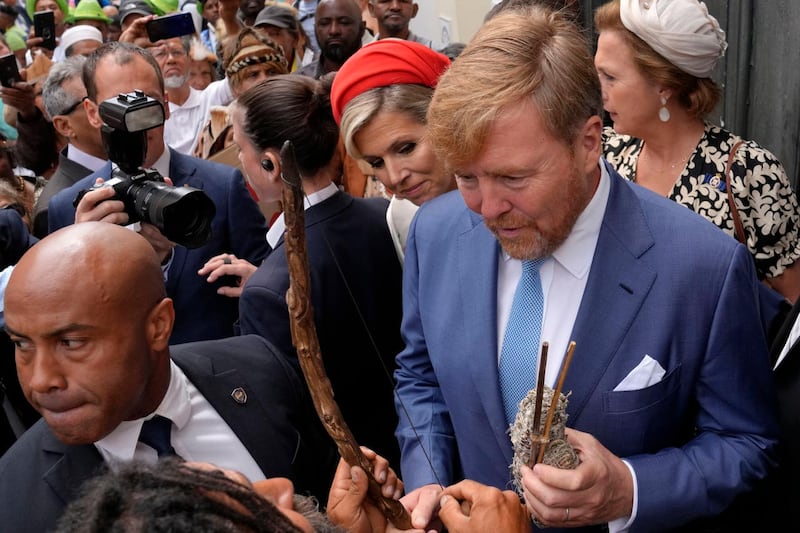
Slaves were brought to work at the colony from Asian and other African countries, but First Nations inhabitants of South Africa were also enslaved and forced off their land.
Historians estimate there were nearly 40,000 slaves in the Cape Colony when slavery ended.
First Nations groups have often lobbied the South African government to recognise their historic oppression.
They say their story has largely been forgotten in South Africa, which instead is often defined by the apartheid era of brutal forced racial segregation that was in place between 1948 and 1994.
First Nations people have a different ethnic background from South Africa’s black majority.
